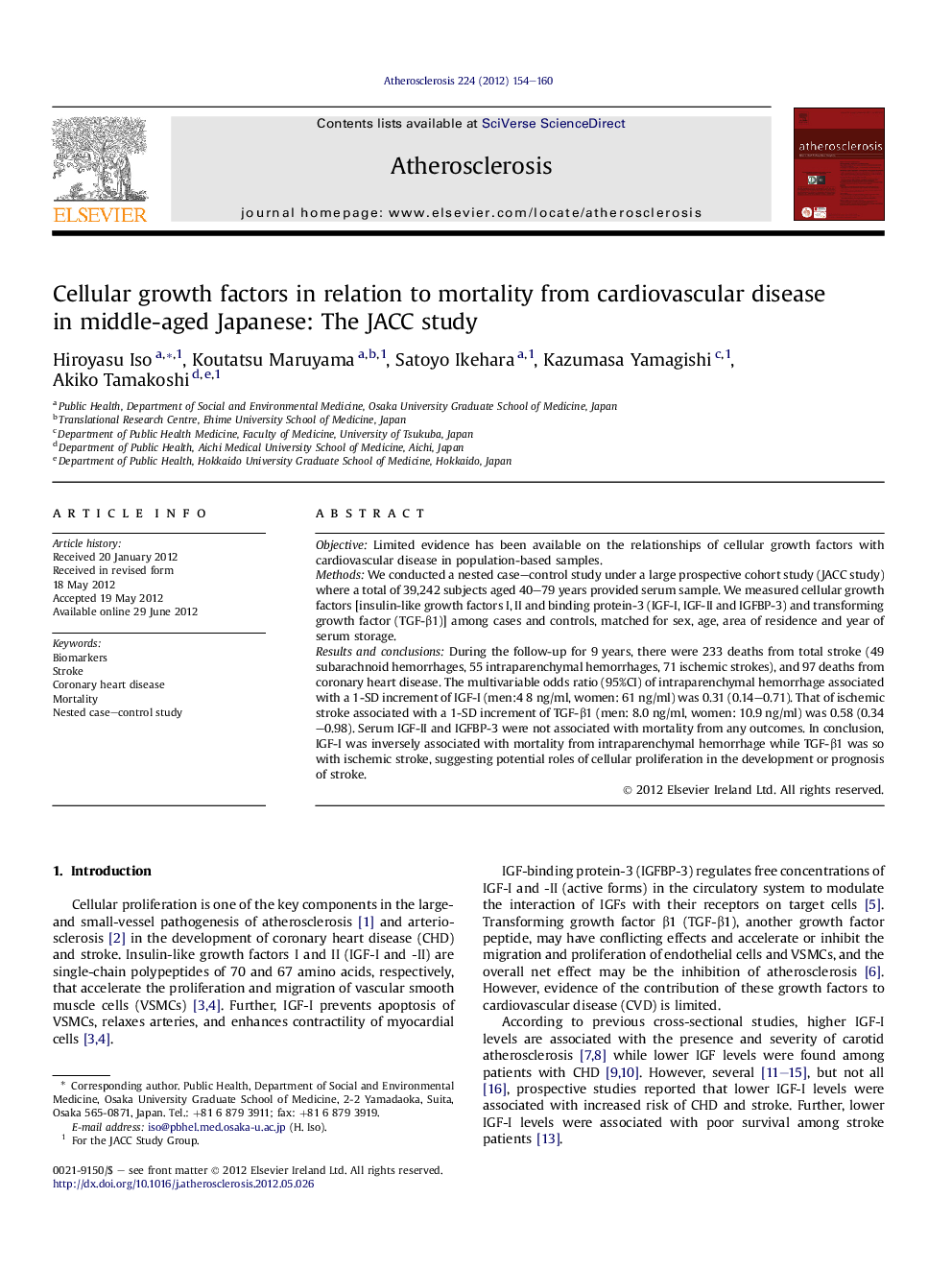| Article ID | Journal | Published Year | Pages | File Type |
|---|---|---|---|---|
| 5947556 | Atherosclerosis | 2012 | 7 Pages |
ObjectiveLimited evidence has been available on the relationships of cellular growth factors with cardiovascular disease in population-based samples.MethodsWe conducted a nested case-control study under a large prospective cohort study (JACC study) where a total of 39,242 subjects aged 40-79 years provided serum sample. We measured cellular growth factors [insulin-like growth factors I, II and binding protein-3 (IGF-I, IGF-II and IGFBP-3) and transforming growth factor (TGF-β1)] among cases and controls, matched for sex, age, area of residence and year of serum storage.Results and conclusionsDuring the follow-up for 9 years, there were 233 deaths from total stroke (49 subarachnoid hemorrhages, 55 intraparenchymal hemorrhages, 71 ischemic strokes), and 97 deaths from coronary heart disease. The multivariable odds ratio (95%CI) of intraparenchymal hemorrhage associated with a 1-SD increment of IGF-I (men:4 8 ng/ml, women: 61 ng/ml) was 0.31 (0.14-0.71). That of ischemic stroke associated with a 1-SD increment of TGF-β1 (men: 8.0 ng/ml, women: 10.9 ng/ml) was 0.58 (0.34-0.98). Serum IGF-II and IGFBP-3 were not associated with mortality from any outcomes. In conclusion, IGF-I was inversely associated with mortality from intraparenchymal hemorrhage while TGF-β1 was so with ischemic stroke, suggesting potential roles of cellular proliferation in the development or prognosis of stroke.
⸠Limited evidence on the relationships between cellular growth factors and CVD. ⸠Lower IGF-I was associated with higher mortality from intraparenchymal hemorrhage. ⸠Lower TGF-β1 was associated with higher mortality from ischemic stroke. ⸠These cellular growth factors may contribute the development or prognosis of stroke.
